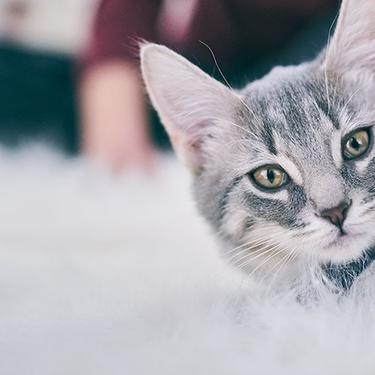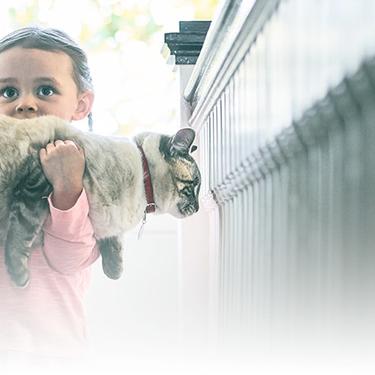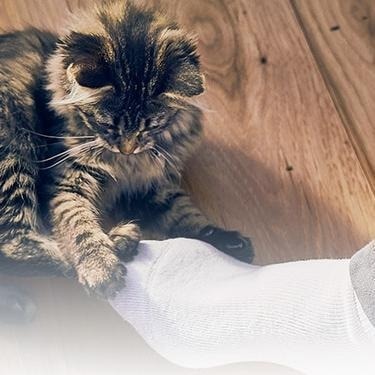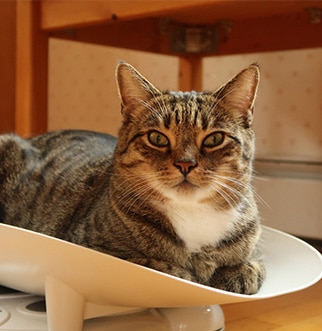
-
Find the right food for your pet
Take this quiz to see which food may be the best for your furry friend.
Find the right food for your pet
Take this quiz to see which food may be the best for your furry friend.
Featured products
 Adult Perfect Weight & Joint Support Chicken Recipe Dry Dog Food
Adult Perfect Weight & Joint Support Chicken Recipe Dry Dog FoodThis weight management and mobility support dog food was created with Hill’s unique understanding of the biology of overweight dogs.
Shop Now Adult 7+ Perfect Digestion Chicken, Whole Oats & Brown Rice Recipe Dog Food
Adult 7+ Perfect Digestion Chicken, Whole Oats & Brown Rice Recipe Dog FoodScience Diet's breakthrough nutrition supports ultimate digestive well-being & healthy microbiome for dogs age 7+
Shop Now Adult 7+ No Corn, Wheat, Soy Chicken & Brown Rice Dog Food
Adult 7+ No Corn, Wheat, Soy Chicken & Brown Rice Dog FoodSupports energy level and beautiful coat in mature dogs
Shop NowFeatured products
 Adult Savory Chicken Entrée Cat Food
Adult Savory Chicken Entrée Cat FoodPrecisely balanced nutrition with the delicious taste of savory minced chicken to help fuel the energy needs of cats during the prime of their life
Shop Now Perfect Weight Salmon & Vegetable Canned Cat Food
Perfect Weight Salmon & Vegetable Canned Cat FoodOver 70% of cats lost weight within 10 weeks when fed this nutrition
Shop Now Adult Perfect Digestion Chicken, Barley & Whole Oats Recipe Cat Food
Adult Perfect Digestion Chicken, Barley & Whole Oats Recipe Cat FoodScience Diet's breakthrough nutrition supports ultimate digestive well-being & healthy microbiome
Shop Now -
Dog
- Dog Tips & Articles
-
Health Category
- Weight
- Food & Environmental Sensitivities
- Urinary
- Digestive
- Joint
- Kidney
-
Life Stage
- Puppy Nutrition
- Adult Nutrition
- Senior Nutrition
Cat
- Cat Tips & Articles
-
Health Category
- Weight
- Skin & Food Sensitivities
- Urinary
- Digestive
- Kidney
-
Life Stage
- Kitten Nutrition
- Adult Nutrition
Featured articles
 Water
WaterDiscover why water is the most important nutrient for your dog or cat to live a healthy life. Find out how much water your pet should consume each day.
Read More The Incredible Science Behind Your Pet's Microbiome
The Incredible Science Behind Your Pet's MicrobiomeLearn what a pet's microbiome is, how it contributes to your pet's gut & overall health, and why nutrition is important in maintaining healthy microbiomes.
Read More Pet Food Storage Tips
Pet Food Storage TipsDiscover how and where to store your dry, as well as canned, dog and cat food. Learn how to find the "best before" dates on all Hill's pet food packaging.
Read More -
Find the right food for your pet
Find the right food for your pet

Each year, roughly 3.2 million cats enter an animal shelter in the United States, according to the ASPCA. When these cats are adopted, sometimes their new homes aren't forever homes, and people end up returning a cat to a shelter.
The reasons for this vary. An older adopted cat may not be the best fit for a household with energetic young children. A first-time cat adopter may not understand how to help a new pet adjust. If you're considering adopting a cat, take some time to learn the most common reasons for returning a cat to the shelter to set up the best possible situation for you and your potential new companion.
Inappropriate Urination
Missing the litter box is often the top reason for returning a cat to a shelter. Solving this behavior depends on the cause. Cats use the scent of urine to calm themselves and mark their territory, explains the ASPCA, so it makes sense that the stress of a new home prompts some hit-or-miss potty behaviors. Some cats adopted from a life outdoors might not understand what you expect. Elimination also serves as a barometer of feline health. A cat experiencing a sudden change in bathroom habits may be sick and definitely requires a veterinary check.
To avoid returning a cat to a shelter and instead foster good litter box habits, limit a new cat's access to a single room for the first week or so. Make it easy for the cat to find the litter box. Make sure you offer large boxes that a cat can easily use without hanging out or over-shooting the edge. Some cats want one box for liquids and another for solids, so more than one box works best.
Most cats prefer uncovered boxes that don't hold odors, and they'll avoid a stinky, dirty box. Clean it daily! Cats also tend to prefer a fine, sandy litter to dig and may protest with out-of-the-box thinking if you try to switch brands. For former outdoor cats, help them understand what's expected by sprinkling soil on top of the litter to help transition them to an indoor lifestyle.

Scratching
All cats, especially a newly adopted cat, need to scratch. Cats scratch to file their claws, mark their territory, stretch their bodies and relieve stress. It's not unheard of for cats to scratch furniture, walls and other inappropriate places. Because of this, many new pet parents find themselves returning a cat to a shelter to save their belongings.
Plan for this normal behavior. Cats tell you what they prefer, from vertical upholstery surfaces to horizontal wood or carpet. Cats also have preferred scratch locations. They want their scratch graffiti seen, so locate the scratch object in an attractive spot. Prime locations include near a window, pathway, door or other important cat territories, like the food bowl. Scent the scratch surfaces with catnip and lure your pet to scratch with feather toys.
Make illegal scratch targets unattractive by applying double-sided sticky tape to furniture while locating the legal scratch post nearby until the cat learns the new rules. Inappropriate scratching usually resolves itself if you provide better, more appropriate scratch options. You can even create your own scratching post for your adopted cat.


Tasty Tips
Health Issues
New pet parents often want to adopt a healthy animal. Not only are sick or injured cats tough to care for, but veterinary bills are an expense many people aren't ready to afford.
Understand the financial responsibilities of getting a cat before ever going to a shelter. Ask whether your new cat has been spayed/neutered, whether they're up to date on vaccinations and what other issues to expect to help prevent unexpected financial surprises. You can also consider pet insurance or starting a savings account a few months or years before welcoming a new pet into your family. That way, you won't have to consider returning a cat to a shelter for financial reasons.
Getting Along With Children and Other Pets
Many families want an adopted cat that gets along well with children and other pets. Shelters observe a cat's temperament prior to adoption, but stress and the artificial environment of a shelter make it hard to get an accurate assessment of a kitty's personality. Look for cats with a history of living with other animals or people. The important personality characteristics to consider often depend on who's in your household, such as large dogs or small children. Patience is key. Cats can take weeks to adjust to new people, places and pets.
Many cats also won't want to meet anyone new until they feel safe in their environment. Let your cat decompress in one room, away from kids and pets, for at least a week. That gives the cat a familiar, safe retreat while meeting other pets with sniffs and paw pats under the door. Next, give the new cat a chance to check out the rest of the house while other pets and kids are elsewhere. Once they're introduced to all the best hiding spots and perches, cats become more willing to meet new family members.
An adopted cat wants to control their interactions. Strangers might scare them. Ask kids, partners and visitors to sit on the ground and pretend to ignore the cat. Let the new pet approach — or not. Avoid touching the cat until they approach on their own and ask for pets by gently headbutting. Scent rules your cat's life, and these cheek rubs mark furniture and your ankles as safe. Not all cats enjoy lap-sitting, but they share safe-smelling scents by grooming each other and rubbing against those they trust. It takes time, but that headbutt on your shin is a sure sign your new cat accepts you as a trusted friend.
Housing Restrictions
Cats may be returned to shelters because of changes or misunderstandings in apartment pet restrictions. If you rent or are relocating to a new property, check with your landlord about having a cat. If you know their pet policy ahead of time, it will help you decide if it's the right new home for you and a future cat. That way, you avoid the heartbreak of returning a cat to a shelter because you misunderstood the rules.
There are other reasons people return cats to shelters, but these are the most common ones. A little research and patience can go a long way when making your home comfortable for your new cat. If they struggle to adapt, don't rush back to the shelter right away. Patience and time to let your cat adjust will go a long way. With the chance to be happy and comfortable, you might find your new kitty is well on their way to being the perfect companion.


Amy Shojai, is a certified animal behavior consultant, and nationally known authority on pet care and behavior. She began her career as a veterinary technician and is the award-winning author of more than 35 prescriptive nonfiction pet books.
Related products

Precisely balanced nutrition with the delicious taste of savory minced chicken to help fuel the energy needs of cats during the prime of their life

Feline Adult Perfect Weight Variety Pack

Science Diet's breakthrough nutrition supports ultimate digestive well-being & healthy microbiome

Over 70% of cats lost weight within 10 weeks when fed this nutrition
Related articles

Discover the benefits of Hill's line of kitten foods and how they provide complete and balance nutrition for growing kittens.

Discover how to identify cat sensitive skin and what you can do to help your cat thrive from head to paw.

Discover which cat toys games your feline friend might like, and how they are great sources of exercise. Explore our library of articles to learn more.

How do you get a cat to lose weight? Learn all about cat foods for weight loss, including how to choose weight control cat food and exercise tips.

Put your cat on a diet without them knowing
Our low calorie formula helps you control your cat's weight. It's packed with high-quality protein for building lean muscles, and made with purposeful ingredients for a flavorful, nutritious meal. Clinically proven antioxidants, Vitamin C+E, help promote a healthy immune system.
Put your cat on a diet without them knowing
Our low calorie formula helps you control your cat's weight. It's packed with high-quality protein for building lean muscles, and made with purposeful ingredients for a flavorful, nutritious meal. Clinically proven antioxidants, Vitamin C+E, help promote a healthy immune system.

